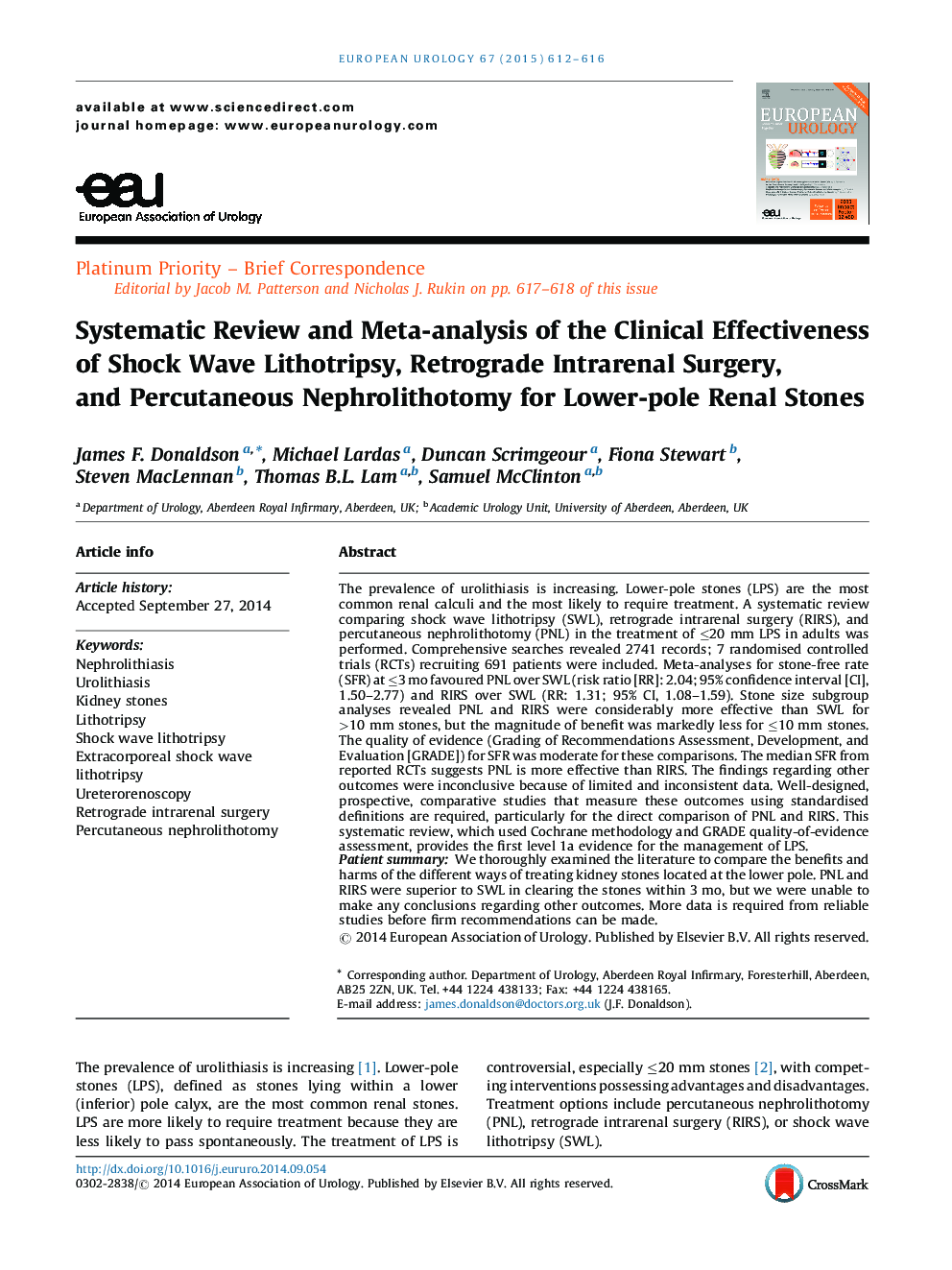| Article ID | Journal | Published Year | Pages | File Type |
|---|---|---|---|---|
| 6175248 | European Urology | 2015 | 5 Pages |
The prevalence of urolithiasis is increasing. Lower-pole stones (LPS) are the most common renal calculi and the most likely to require treatment. A systematic review comparing shock wave lithotripsy (SWL), retrograde intrarenal surgery (RIRS), and percutaneous nephrolithotomy (PNL) in the treatment of â¤20 mm LPS in adults was performed. Comprehensive searches revealed 2741 records; 7 randomised controlled trials (RCTs) recruiting 691 patients were included. Meta-analyses for stone-free rate (SFR) at â¤3 mo favoured PNL over SWL (risk ratio [RR]: 2.04; 95% confidence interval [CI], 1.50-2.77) and RIRS over SWL (RR: 1.31; 95% CI, 1.08-1.59). Stone size subgroup analyses revealed PNL and RIRS were considerably more effective than SWL for >10 mm stones, but the magnitude of benefit was markedly less for â¤10 mm stones. The quality of evidence (Grading of Recommendations Assessment, Development, and Evaluation [GRADE]) for SFR was moderate for these comparisons. The median SFR from reported RCTs suggests PNL is more effective than RIRS. The findings regarding other outcomes were inconclusive because of limited and inconsistent data. Well-designed, prospective, comparative studies that measure these outcomes using standardised definitions are required, particularly for the direct comparison of PNL and RIRS. This systematic review, which used Cochrane methodology and GRADE quality-of-evidence assessment, provides the first level 1a evidence for the management of LPS.Patient summaryWe thoroughly examined the literature to compare the benefits and harms of the different ways of treating kidney stones located at the lower pole. PNL and RIRS were superior to SWL in clearing the stones within 3 mo, but we were unable to make any conclusions regarding other outcomes. More data is required from reliable studies before firm recommendations can be made.
